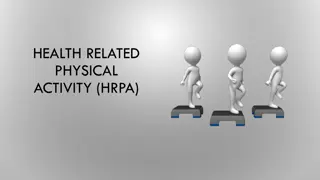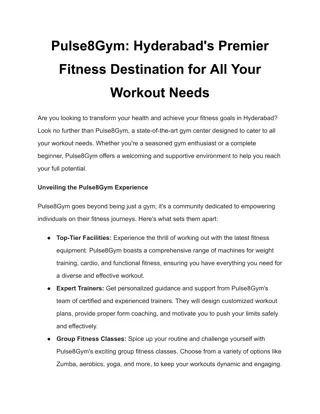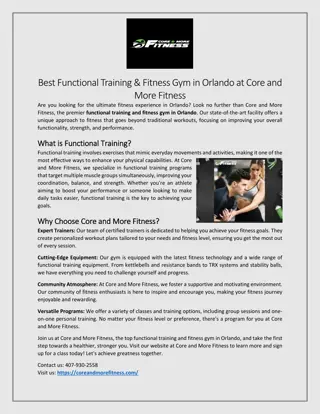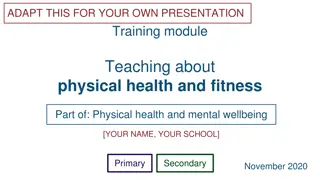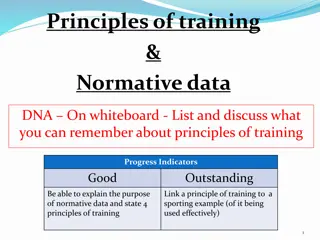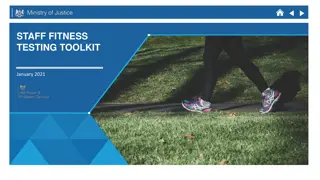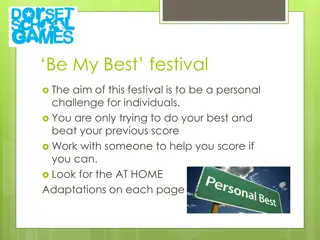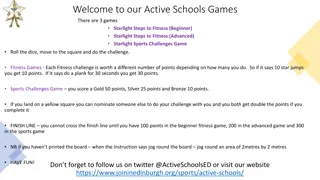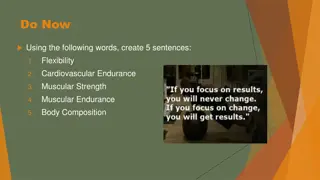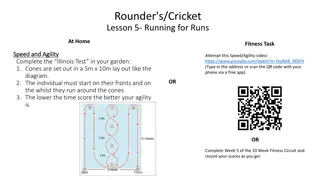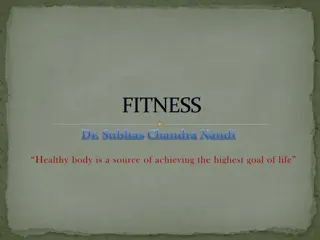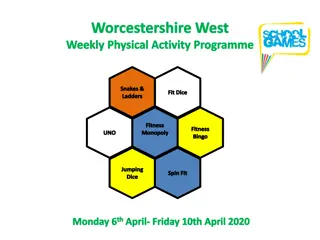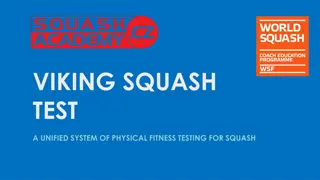Higher PE Physical Fitness and Agility Training
This content discusses aspects of physical fitness, focusing on agility and cardio-respiratory endurance. It covers methods of testing agility, approaches to enhancing fitness levels, and the impacts of cardio-respiratory endurance on sports performance. Various tests like the Illinois agility test, Cooper test, Leger test, and more are explored, along with training methods such as plyometrics, interval training, and speed/agility circuits.
Download Presentation

Please find below an Image/Link to download the presentation.
The content on the website is provided AS IS for your information and personal use only. It may not be sold, licensed, or shared on other websites without obtaining consent from the author.If you encounter any issues during the download, it is possible that the publisher has removed the file from their server.
You are allowed to download the files provided on this website for personal or commercial use, subject to the condition that they are used lawfully. All files are the property of their respective owners.
The content on the website is provided AS IS for your information and personal use only. It may not be sold, licensed, or shared on other websites without obtaining consent from the author.
E N D
Presentation Transcript
Higher PE PHYSICAL FITNESS
Aspects of Fitness Cardio- respiratory endurance CRE Power Speed Aspects of Fitness Agility Strength Local muscular endurance Flexibility
Agility the ability to change direction at speed Positive Impacts Change direction quickly to beat defenders Stop/start quickly lose defenders Negative Impacts Easily exploited when in defence Can t respond to opponents movements quickly Won t be able to apply pressure or steal the ball Can t outmanoeuvre opposition Create space create scoring opportunities Stay tight to your marker in defence
Method of Gathering Information The Illinois agility test is a standardised test conducted as follows: Athlete lies face down on the floor at the start point. On the assistants command the athlete jumps to his / her feet and negotiates the course around the cones to the finish line. The assistant records the total time taken from their command to the athlete completing the course. GENDER EXCELLENT ABOVE AVERAGE 15.2 16.1 secs 17.0 17.9 secs AVERAGE BELOW AVERAGE 18.2 19.3 secs 21.8 - 23.0 secs POOR MALE <15.2 secs 16.2 18.1 secs 18.0 21.7 secs > 19.3 secs FEMALE <17.0 secs > 23.0 secs
Approaches Plyometrics Training within the game Interval training Speed/Agility Circuit
Cardio Respiratory Endurance (CRE) ability of heart & lungs to provide oxygenated blood Positive Impacts Last the duration of the game Negative Impacts Fatigue quickly resulting in the need for long rests Opponent will be able to get away from you Struggle to transition between attack and defence Drop in skills Maintain high skill levels Allow you to keep making good decisions Fulfil your role demands
Methods of Gathering Information Cooper Test (12min run) Standardised Test Leger Test (Bleep test) Standardised Test Yo-Yo (rugby) Standardised Test Time Related Observation Schedule game related Hoff Test (football) game related
Approaches Continuous Training Interval Training Fartlek Training Training within the game



